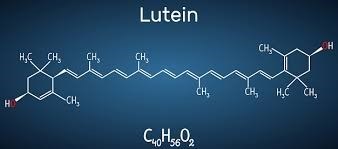LUTEIN - Food industry processing
Cập nhật lúc 09:37, Thứ tư, 07/08/2024 (GMT+7)
Lutein form part of the xanthophyll family of carotenoids; it is usually found in flowers, grains, fruits and vegetables, such as spinach and kale. The lutein market is segmented into pharmaceutical, dietary supplement, food, and animal and fish feed industries. Luitein principal application is to brighten the colors of poultry feathers and deepen the yellow of egg yolk.
Lutein form part of the xanthophyll family of carotenoids; it is usually found in flowers, grains, fruits and vegetables, such as spinach and kale. The lutein market is segmented into pharmaceutical, dietary supplement, food, and animal and fish feed industries. Luitein principal application is to brighten the colors of poultry feathers and deepen the yellow of egg yolk. However, lutein use in the food industry is limited due to its instability and the chemical changes caused during food processing. Processes which may affect the integrity of lutein include high temperatures, the presence of oxygen, light and extreme pH.
    |
 |
| Fig 1. Lutein chemical structure |
The lutein polyene backbone is susceptible to degradation due to the conditions present during food processing which may result in the fragmentation of the molecule. Energy in the form of light, heat and mechanical stress are capable of interrupting conjugation of the molecule causing loss of color and biological activity. Nowadays the production of commercial lutein involves four steps. The cultivation, pretreatment, processing and fine processing. Fresh Tagetes flowers are currently the raw material used for lutein extraction, they are harvested and then sent to processing facilities. Flowers are ensiled (anaerobic fermentation) with the aim of preserving them for longer periods of time during storage. After ensilage, only the petals are dried, crushed and compressed to make the “marigold granules”, which are considered the first crude lutein product. These granules must pass through an extraction process to make a second product: “marigold oleoresin” or “lutein oleoresin”. Finally, if the lutein products require higher purity, it can be obtained through final process saponification and purification of the “marigold oleoresin’. Their hydrophobic nature has confined carotenoid almost entirely to lipid systems (emulsions); large amounts of carotenoids can be present in very fine dispersions capable of coloring aqueous matrices. The use of carotenoids for coloring lipid phase food matrices can be achieved easily. Products such as oils, lards, dressings, margarine and butter are frequently colored using carotenoids. Usually, after the fatty product has been clarified, the carotenoid suspension is added to the warm product (40–50°C) with agitation until the complete dissolution is achieved. Subsequent treatments as chilling are performed. If antioxidants are added for the protection of the oxidative rancidity of the fat, they will also provide an added stabilizing influence on the carotenoids. In bakery use, the color carried to cookies, cake frosting, doughnuts, etc. will depend on temperature and color level. High temperature process, such as deep-frying oils may affect carotenoid stability. On going research in carotenoid chemistry and formulation will improve and develop new manufacturing methods that could increase the its application in food matrices and expand the market with broader applications. In plant cells, carotenoids are mostly stored inside of the chloroplast, protecting them from external contact with other cell components. Once cellular integrity is lost, carotenoids are prone to degradation due to environmental stress. As shown during processing of carrot and blood orange juice, where lutein degradation is in a range of 26–50%, because during juice extraction, cellular integrity was lost providing minor resistance and causing a major degradation. Also, due to the low water-solubility of lutein, fat-rich formulations (emulsion-based systems) may reduce the degradation in the food matrix by limiting the presence of hydrophilic free radicals. Due to the low watersolubility of lutein, fat-rich formulations (emulsion-based systems) may reduce the degradation in the food matrix by limiting the presence of hydrophilic free radicals. It can be observed that 26–50% of lutein is lost during processing of carrot and blood orange juice. In these cases, cellular integrity was lost during juice extraction providing minor resistance to degradation.
Refernence: Becerra, Mario Ochoa, et al. "Lutein as a functional food ingredient: Stability and bioavailability." Journal of Functional Foods 66 (2020): 103771 https://www.sciencedirect.com/science/article/pii/S1756464619306954
Le My Hanh, Dept. Food science and Nutrition